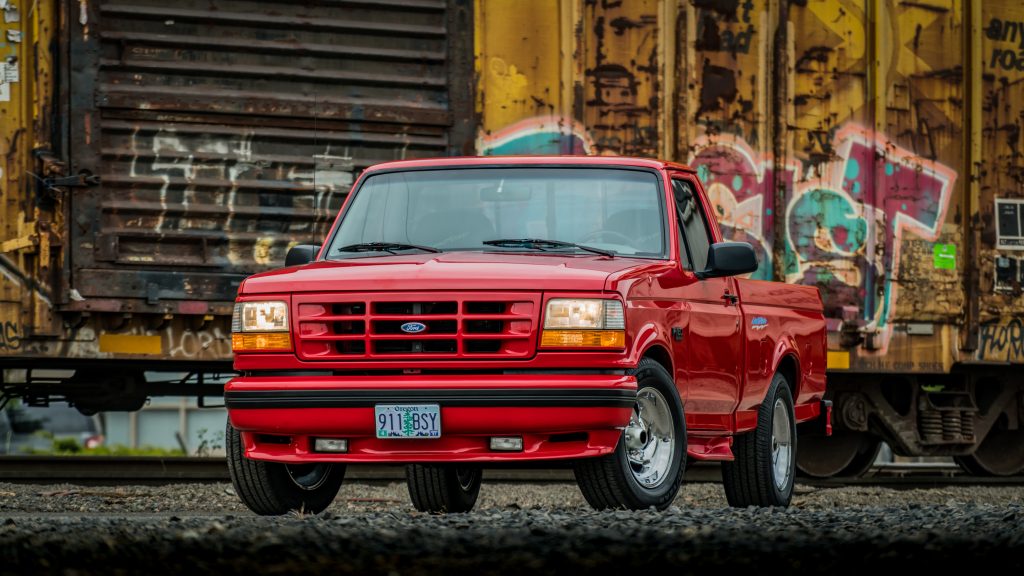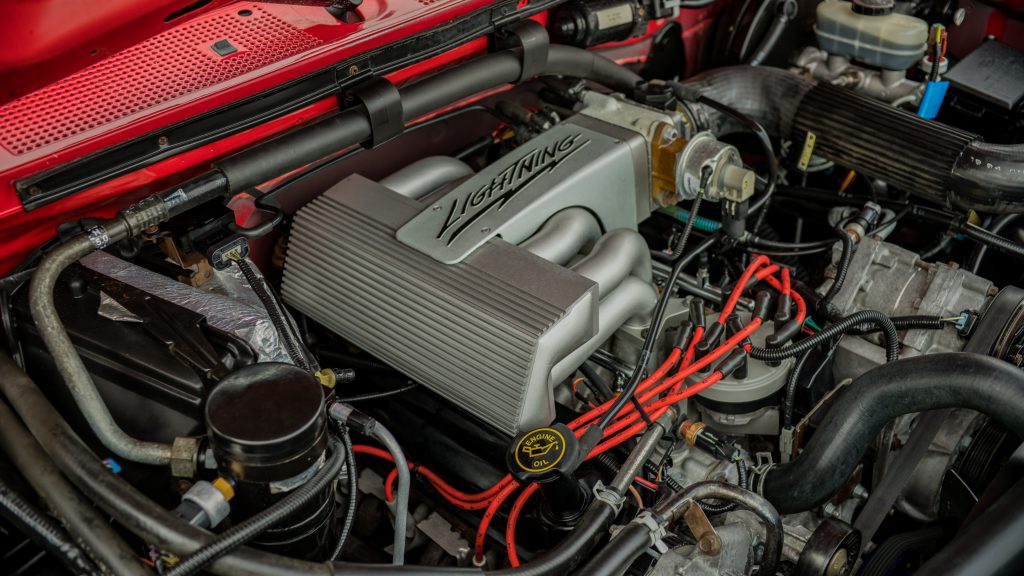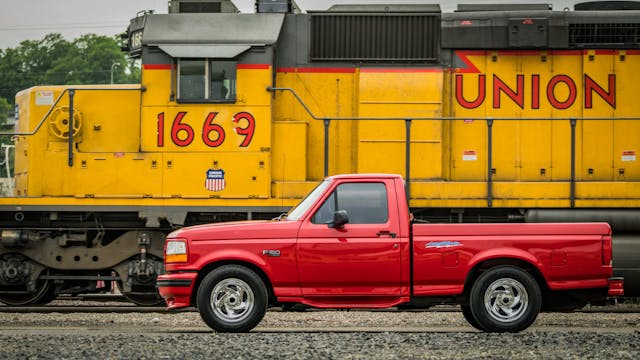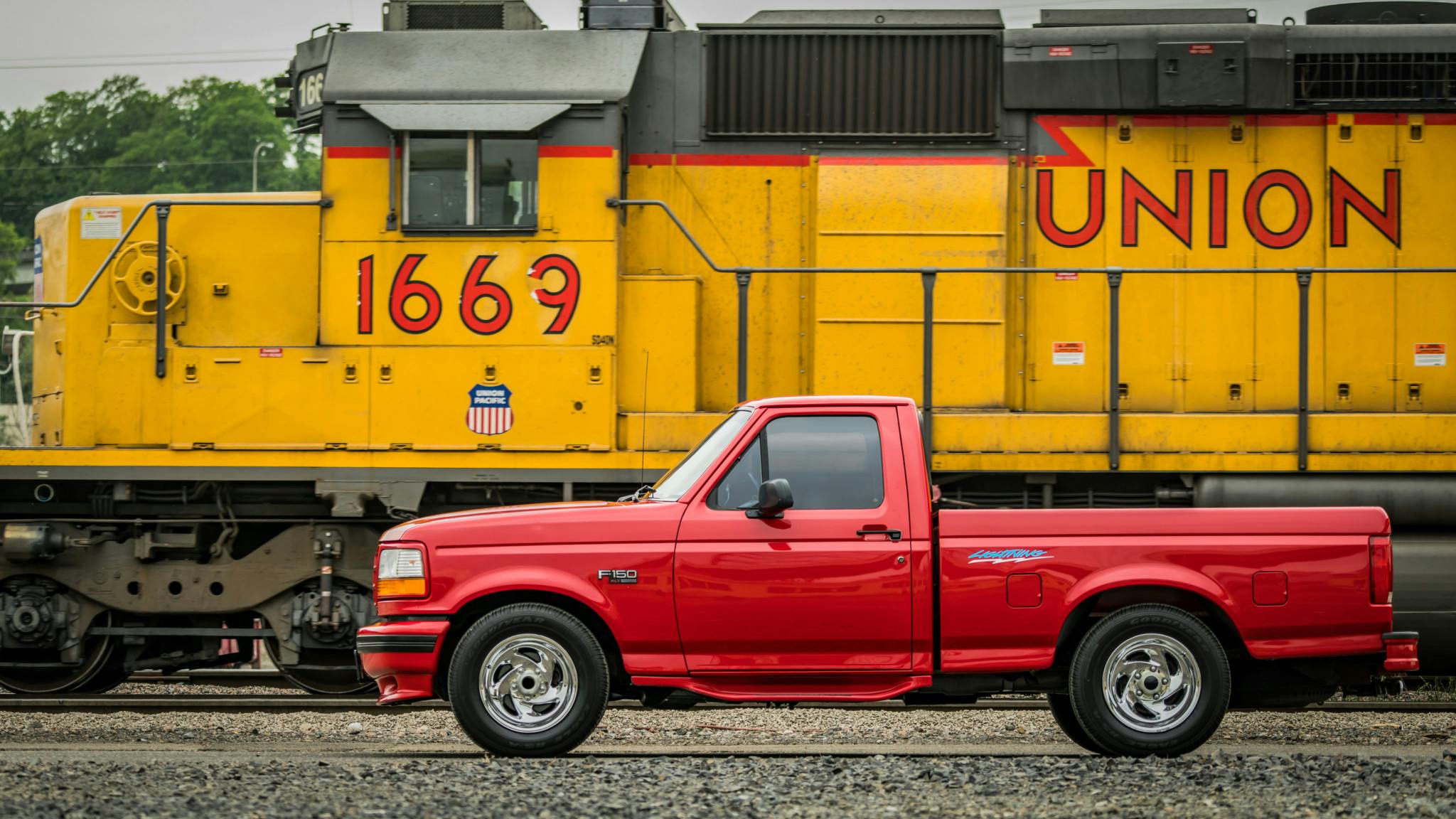Media | Articles
Ford’s first muscle truck, the SVT Lightning, is still an affordable classic
General Motors is the reason Ford got into the muscle truck business in 1993. Ford’s crosstown rival lit up magazine covers with Chevy’s 1990 454SS and then the all-wheel-drive GMC Syclone a year later. Car and Driver even pitted a Syclone against a Ferrari 348ts, and the contest didn’t end well for Enzo. Ford’s corporate ego could only take so much.
In 1991, Ford senior management created the Special Vehicle Team (SVT), and alongside the new-for-’93 Mustang Cobra, the first-generation SVT F-150 Lightning debuted at the 1992 Chicago auto show. Ironically, by the time production Lightnings hit the street, GM had already pulled the plug on its two muscle trucks. The Syclone was a one-year wonder, and the big-block-powered 454SS would go away after 1993.
But in that single model year, when the Chevy and the 351-powered Lightning overlapped, Ford proved it had built the better mousetrap. In showrooms, the Lightning won the sales race. Ford offered its fast truck in Bright Red or Raven Black and sold 5276 of them, nearly five times as many as its rival. In magazine tests, the SVT Lightning consistently outhandled the Chevy while matching its acceleration, despite its less potent small-block V-8.
The Lightning’s athleticism was quite a feat, too, as SVT was working with the F-150’s decidedly un-sporty twin-I-beam front suspension. But the truck was lowered 2.5 inches, and the engineers fitted Monroe Formula GP gas shocks, one-inch-thick front and rear antiroll bars, and single-leaf rear springs. The brakes were beefy—11.7-inch front rotors and 11-inch rear drums—but the steering was slow, with a 17:1 ratio. Every SVT Lightning rode on 17×8-inch aluminum wheels and Firestone Firehawk GTA blackwalls.

SVT’s engineers also made the most of Ford’s aging pushrod 5.8-liter V-8, which featured just 8.8:1 compression and a flat-tappet camshaft. To make power, they tweaked the ignition and fuel injection and added GT40-type cast-iron cylinder heads with larger valves, a tuned intake manifold, aluminum hypereutectic pistons, tubular stainless-steel headers, and dual exhaust. The result was 240 horsepower at 4200 rpm and 340 lb-ft of torque at 3200 rpm.
Marketplace
Buy and sell classics with confidence
Although they weigh over 4400 pounds, Lightnings were quick for the time. This was thanks in part to SVT dialing up the performance of the column-shifted four-speed automatic and putting 4.10 gears in the truck’s 8.8-inch differential. The sprint to 60 mph took 7.2 seconds, and a Lightning covered the quarter-mile in 15.6 seconds at 87 mph. They could also tow 5000 pounds.
Inside, upgrades over the interior of a standard F-150 were minimal. Lightnings got a leather-wrapped wheel, for example, and they were the only F-150s to get bucket seats, which were covered in cloth.
Ford sold 11,563 first-generation Lightnings and made very few changes to the truck during its three years of production; most notably, white joined the color selection for 1994.

Over the last five years, values have jumped about 20 percent, but Lightnings remain affordable, with good examples averaging about $10,000. Rarest are the red 1995 models, with just 645 built. And beware of clones. If it’s a real Lightning, the VIN’s eighth digit will be an “R.” For “racy,” we suppose.
I Own One: Shannon Bruffett, Tampa, Florida
I bought a Lightning brand new back in 1993. I was 21 and didn’t know anything about them. I walked onto my local Ford lot to look at Rangers and saw a red Lightning and thought it was the bee’s knees. I looked everywhere for a black one and finally found it in the dealership in a podunk town. It had been sitting there all year and had cobwebs in the wheel wells. Sadly, it came to a tragic end in the early 2000s, but I always wanted another one. I found it in 2013, a black ’94 that is all original, with about 278,000 miles on it. The guy before me took great care of it, so it’s really clean despite the mileage. It’s got some rattles but runs great, burns no oil, and doesn’t leak anywhere. Those Windsor V-8s are bulletproof. Overall, it’s a great weekend truck that I can use year round.






This one suffered because the next one was supercharged..